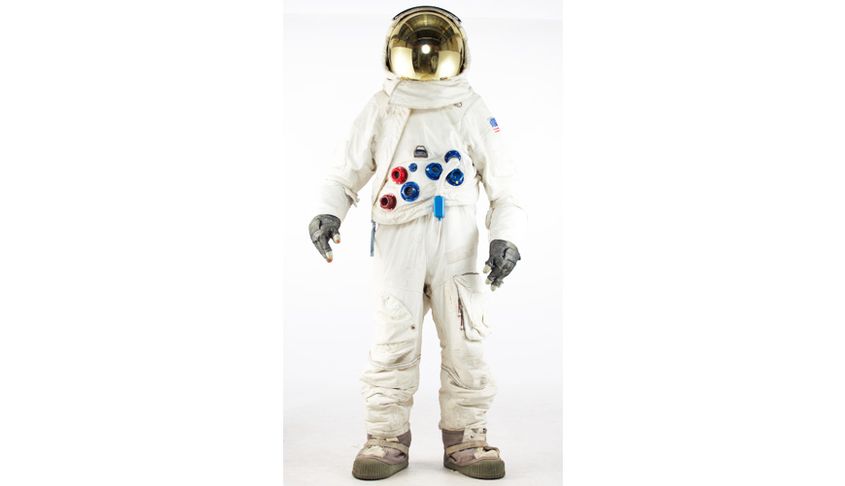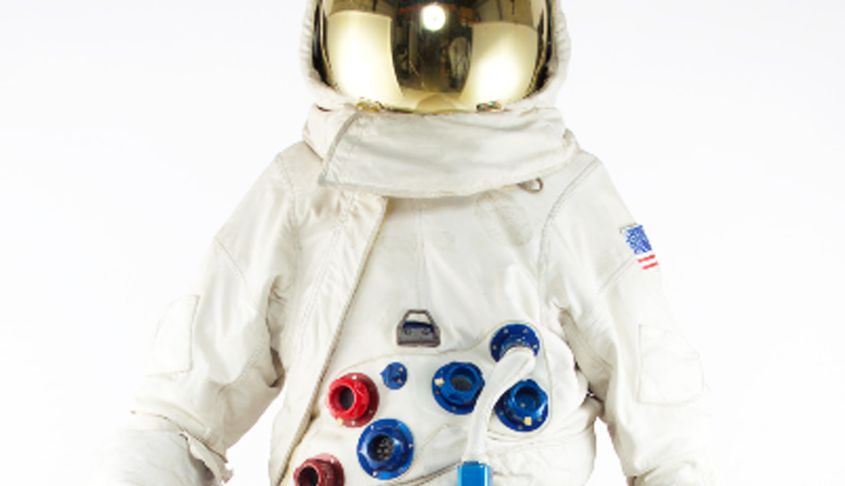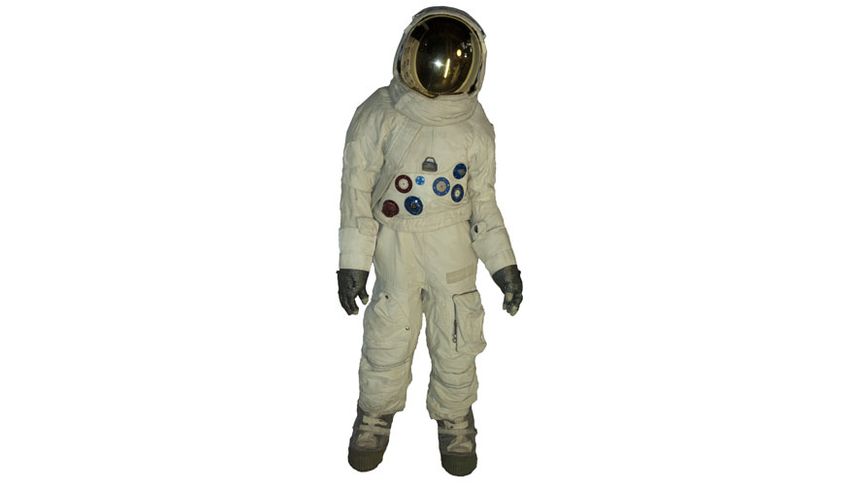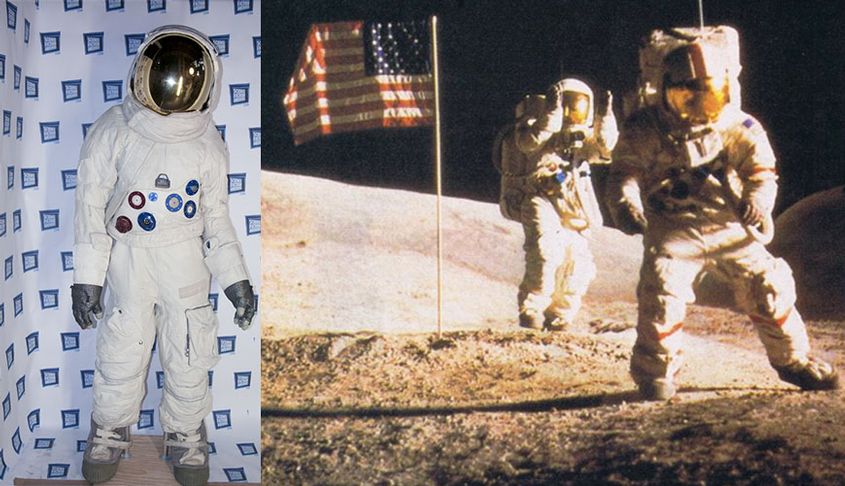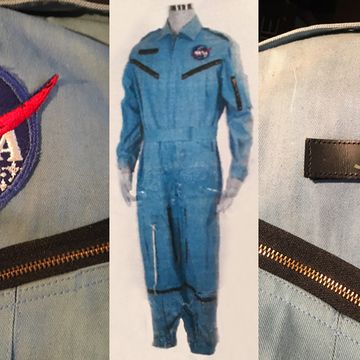Astronaut Randy Claggett Apollo Space Suit Original Costume (Beau Bridges)
This spacesuit was used in the TV miniseries Space by actor Beau Bridges as Apollo astronaut Randy Clagett. This is in fact a real suit designed and built, for NASA Apollo astronauts, by International Latex Company (ILC).
Usually the Appolo spacesuit sere basically a one-piece suit, which astronauts entered from the back, and the one in ScienceFictionArchives.com's Collection, is a 2 parts spacesuit. ILC started designing suits in 1961; started making test and prototype suits in 1964; and started delivering suits for use by the Apollo astronauts in 1966. We assume that this specific spacesuit was developed to allow astronauts to enter more easily their suit, but it never got beyond the concept stage.
The Apollo suits are basically made by sewing and cementing various materials together, and then attaching metal parts that let you join the different components together. Suit materials include: ortho-fabric, aluminized mylar, neoprene-coated nylon, dacron, urethane-coated nylon, tricot, nylon/spandex, stainless steel, and high strength composite materials. The suit had boots made to walk on rocky ground, a life support system. Each suit was made to fit (custom-tailored to) each astronaut. Each Apollo mission required 15 suits to support the mission. For the main, or prime, three-man crew, each member had three suits: one for flight; one for training; and one as a flight backup in case something happened to the flight suit. Thus, the prime crew had a total of nine suits. The backup three-man crew each had two suits: one for flight and one for training, and one as a flight back-up in case something happened to their flight suit, thus a total of 9 suits for the prime crew. The back-up three-man crew each had two suits: I for flight and I for training. The astronaut corps at that time included between 25 and 27 astronauts. Apollo space helmets were formed from high strength polycarbonate and were attached to the spacesuit by a pressure-sealing neck ring. Unlike Mercury and Gemini helmets, which were closely fitted and moved with the crewman's head, the Apollo helmet was fixed and the head was free to move within. While walking on the Moon, Apollo crewmen wore an outer visor assembly over the polycarbonate helmet to shield against eye damaging ultraviolet radiation, and to maintain head and face thermal comfort. Completing the Moon explorer's ensemble were lunar gloves and boots, both designed for the rigors of exploring, and the gloves for adjusting sensitive instruments.
It has been reported in the news media that the ILC spare suit costs two million dollars. This does not mean that each time the suit is used it costs two million dollars. If you would never use the parts for another astronaut or another mission, then you would have a one-time use and the cost could probably be as high as what the news media says it is.







